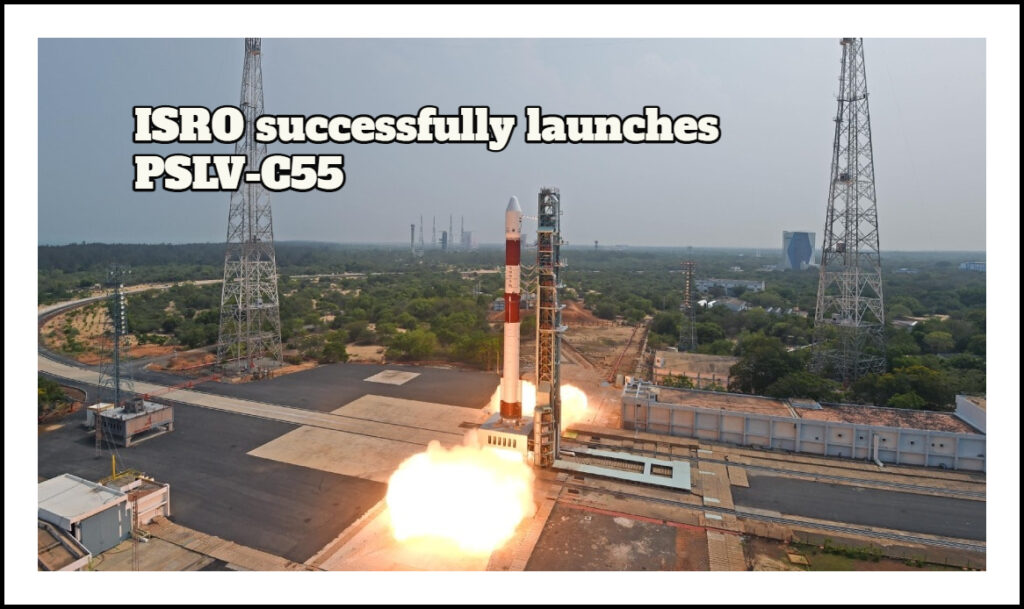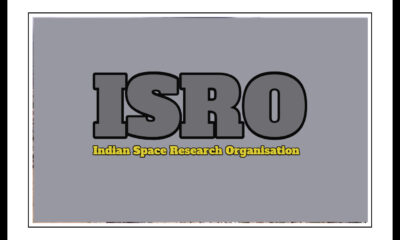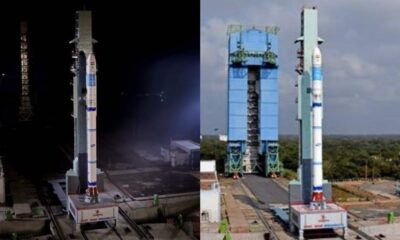Science –Technology
ISRO successfully launches PSLV-C55, which will place two Earth-observing satellites into orbit.
Published
1 year agoon

ISRO’s commercial mission was carried out via NSIL, with TeLEOS-2 serving as the primary satellite.
The PSLV-C55 was successfully launched by the Indian Space Research Organisation (ISRO) on Saturday from the Satish Dhawan Space Centre in Sriharikota, putting two Singaporean Earth observation satellites into the desired orbit. “Congratulations PSLV-C55/TeLEOS-2 Mission — The PSLV has placed both satellites in the intended orbit,” ISRO chief S. Somanath said.
According to ISRO, the launch was completed at 14:19 IST.
Speaking of the launch, he said that the Polar Satellite Launch Vehicle had once again proven to be dependable and appropriate for commercial launch in its 57th flight.
“We were sent on a mission to the east. and with extreme precision, the inclination is 9.9 degrees. In its 57th flight, PSLV has once more proven its high reliability and suitability for commercial missions of this kind, according to the ISRO director.
Read Also:- Russia is currently India’s largest oil supplier.
“This is the fifth edition launch.” This rocket launch is being carried out with eight small payloads, and we have prayed for its success,” the ISRO chairman said on Friday during a visit to Goddess Chengalamma Temple in Sullurpeta town of Tirupati district.
This launch is also significant for the Indian space startup ecosystem because NSIL’s (NewSpace India Limited) dedicated commercial rocket carried two Singapore satellites as main payloads as well as seven non-separating payloads from ISRO, the Indian Institute of Astrophysics, and startups Bellatrix and Dhruva Space.
The dedicated commercial mission was carried out by NSIL, with TeLEOS-2 serving as the primary satellite and Lumelite-4 serving as a co-passenger satellite. Both Singaporean satellites weigh approximately 741 kg and 16 kg, respectively, and are intended to be launched into an Eastward low inclination orbit, according to ISRO.
A collaboration between ST Engineering and DSTA (representing the Singaporean government) has resulted in the development of the TeLEOS-2 satellite. It will be used to support the satellite imagery needs of various agencies within the Singaporean government once it is deployed and operational. Synthetic Aperture Radar (SAR) is the payload carried by TeLEOS-2. TeLEOS-2 will be capable of imaging at 1m full-polarimetric resolution and will be able to provide coverage in all weather conditions day and night.

The National University of Singapore’s Satellite Technology and Research Centre (STAR) and the Institute for Infocomm Research of A*STAR jointly developed the LUMELITE-4 satellite.
For the technological demonstration of the High-Performance Space-borne VHF Data Exchange System (VDES), the LUMELITE4 advanced 12U satellite was created. It seeks to improve Singapore’s e-navigation maritime safety and assist the world shipping industry by using the VDES communication payload.
The mission carries out scientific experiments using non-separating payloads in orbit using the PSLV Orbital Experimental Module (POEM), which is made up of the spent PS4 stage of the launch vehicle. Indian Institute of Astrophysics, Bellatrix, Dhruva Space, and ISRO/Department of Space are the owners of the payloads, according to ISRO.




